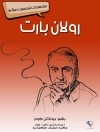Dublin: Renaissance city of literature interrogates the notion of a literary ‘renaissance’ in Dublin. Through detailed case studies of print and literature in Renaissance Dublin, the volume covers innovative new ground, including quantitative analysis of print production in Ireland, unique insight into the city’s literary communities and considerations of literary genres that flourished in early modern Dublin. The volume’s broad focus and extended timeline offer an unprecedented and comprehensive consideration of the features of renaissance that may be traced to the city from the fifteenth to the seventeenth century. With contributions from leading scholars in the area of early modern Ireland, including Raymond Gillespie and Andrew Hadfield, students and academics will find the book an invaluable resource for fully appreciating those elements that contributed to the complex literary character of Dublin as a Renaissance city of literature.
Cuprins
Introduction – Kathleen Miller
1. Peripheral print cultures in Renaissance Europe – Alexander S. Wilkinson
2. Centre or periphery? The role of Dublin in James Yonge’s Memoriale – Theresa O’Byrne
3. Responding to the Renaissance: Books and readers in sixteenth-century Dublin – Raymond Gillespie
4. Edmund Spenser’s Dublin – Andrew Hadfield
5. Complaint and reform in late Elizabethan Dublin, 1579-1594 – David Heffernan
6. Renaissance Dublin and the construction of literary authorship – Marie-Louise Coolahan
7. ‘A real credit to Ireland, and to Dublin’: The scholarly achievements of Sir James Ware – Mark Empey
8. Translation and collaboration in Renaissance Dublin – Eiléan Ní Chuilleanáin
9. Amor vincit omnia: Gaelic poetry and English books – Mícheál Mac Craith
10. Latin oratory in seventeenth-century Dublin – Jason Harris
11. Anglo-Irish drama?: Writing for the stage in Restoration Dublin – Stephen Austin Kelly
Despre autor
Andrew Hadfield is Professor of English at the University of Sussex












